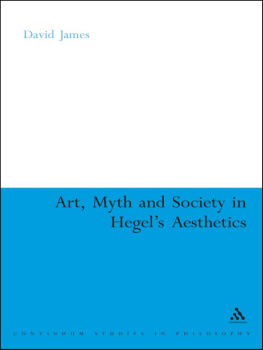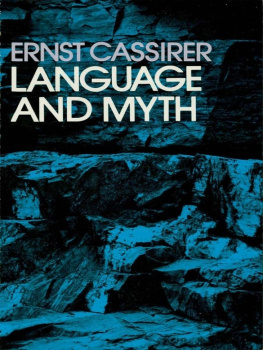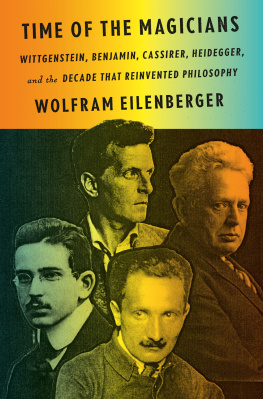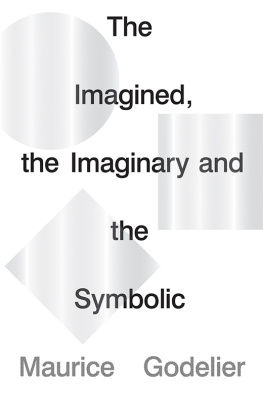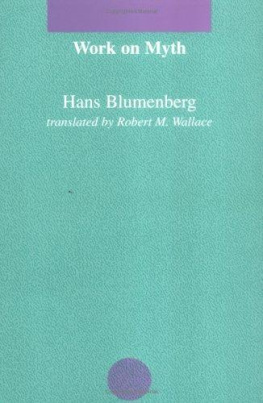THE WARBURG YEARS (19191933)
THE WARBURG YEARS (19191933)
ESSAYS ON LANGUAGE, ART, MYTH, AND TECHNOLOGY
Ernst Cassirer
Translated and with an Introduction by
S. G. Lofts with A. Calcagno
Yale UNIVERSITY PRESS
New Haven and London
Published with assistance from the Ernst Cassirer Publications Fund,
and from the foundation established in memory of Philip Hamilton
McMillan of the Class of 1894, Yale College.
Copyright 2013 by Yale University.
All rights reserved.
This book may not be reproduced, in whole or in part, including
illustrations, in any form (beyond that copying permitted by Sections
107 and 108 of the U.S. Copyright Law and except by reviewers for
the public press), without written permission from the publishers.
Yale University Press books may be purchased in quantity for
educational, business, or promotional use. For information, please
e-mail sales.press@yale.edu (U.S. office) or sales@yaleup.co.uk
(U.K. office).
Set in Baskerville type by Integrated Publishing Solutions.
Printed in the United States of America.
Library of Congress Cataloging-in-Publication Data
Cassirer, Ernst, 18741945.
[Essays. Selections. English]
The Warburg years (19191933) : essays on language, art, myth, and
technology / Ernst Cassirer ; translated and with an introduction by
S.G. Lofts with A. Calcagno.
pages cm
Includes bibliographical references and index.
ISBN 978-0-300-10819-4 (cloth : alk. paper) 1. Philosophy,
German20th century I. Title.
B3216.C32E5 2013
193dc23 2013015801
A catalogue record for this book is available from the British Library.
This paper meets the requirements of ANSI/NISO Z39.481992
(Permanence of Paper).
10 9 8 7 6 5 4 3 2 1
To John Michael Krois
CONTENTS
The Concept of Symbolic Form in the Construction of
the Human Sciences (1923)
The Kantian Elements in Wilhelm von Humboldts
Philosophy of Language (1923)
Language and Myth:
A Contribution to the Problem of the Names of the Gods (1924)
Eidos and Eidolon:
The Problem of Beauty and Art in the Dialogues of Plato (1924)
The Meaning of the Problem of Language for the Emergence
of Modern Philosophy (1927)
The Problem of the Symbol and Its Place in the
System of Philosophy (1927)
TRANSLATORS INTRODUCTION
The initial impetus for this collection of essays by Ernst Cassirer was provided by the enthusiastic encouragement of John Michael Krois, to whom the volume is dedicated. Initially assisting with the selection of essays to be included here, Professor Krois was very generous with his time and knowledge of Cassirers philosophy throughout the manuscripts preparation. All of the translations have benefited from discussions with him over the years about Cassirers philosophy and technical vocabulary, the challenges of rendering Cassirers thought into contemporary English, and how Cassirer himself might have wanted his work to be translated. Krois worked extensively on the translation of Form and Technology and made numerous suggestions for the revision of his own translation of The Problem of the Symbol and Its Place in the System of Philosophy. It is characteristic of him that he insisted we should feel free to retranslate this essay. As he often asserted, a translation is a form of interpretation, and there is nothing wrong with having different interpretations of a text as rich as Cassirers. Krois recognized the need for a single volume of Cassirers most important essays, a volume that would form a sort of Darstellung (a presentation and exhibition) of his work and thought. All of these essays were written between 1921 and 1932, the most productive period of Cassirers career, while he was at the University of Hamburg and worked in close collaboration with the members of the Warburg Library for the Science of Culture.
After completing his doctoral studies with Herman Cohen in Marburg, Cassirer moved to Berlin in 1906. The cosmopolitan atmosphere of Berlin undoubtedly played a formative role in the development of his philosophy of symbolic forms; at the time, Berlin was one of the main cultural and intellectual centers of Europe, and through his family and friends, Cassirer was introduced to various cultural worlds, in particular the worlds of art, music, and literature, as well as the worlds of science, economics, and politics. It was in this context that Cassirer began to work on his philosophy of symbolic forms as a transcendental critique of culture. Unable to secure a permanent university post in Berlin, he taught as a Privatdozent at the University of Berlin from 1906 to 1919. After World War I, two new universities were created in Germany: one in Hamburg, the other in Frankfurt. Wanting to establish themselves, both immediately offered a position to what must have been the most famous Privatdozent in all of Germany, for by 1919 Cassirer had already acquired a considerable reputation as one of the leading thinkers of his generation. By 1920, he had completed a new critical edition of Kant and had published numerous essays and seven monographs. Cassirers first book, Leibnizs System in seinen wissenschaftlichen Grundlagen (1902), had won second place in the prestigious competition of the Berlin Academy (it is worth noting that no first prize was awarded that year). In 1906 and 1907, the first two volumes of his classic history of the problem of knowledge in philosophy and science appeared, and the third volume followed in 1920. It was perhaps the appearance of Substance and Function in 1910, however, that brought the most renown to Cassirer as a thinker in his own right.
Cassirer fortuitously accepted the offer from the University of Hamburg. Where Berlin had been the ideal location for the inception of the project of the philosophy of symbolic forms, Hamburg, in particular the Warburg Library for the Science of Culture, would prove to be the ideal environment for its realization. While Cassirers work was conceptually well advanced when he arrived in Hamburg, there remained a considerable amount of concrete research to be done. As destiny would have it, not only did the Warburg Library contain the material on art, myth, and language that would be indispensable for Cassirers research, its conceptual organization embodied the ideal of a manifold view of culture and meaning that Cassirer was developing philosophically. It is well known that upon entering the library for the first time, Cassirer was immediately sets a standard for the most productive critical engagement in the human sciences, an engagement that determines their belonging together, in and through the differences between each of them, which makes up the unity of the globus intellectualis.
Thus, for example, Cassirer worked closely with Panofsky. We can see the mutual benefit of this collaboration in Cassirers own work as well as in Panofskys, as is evidenced by the title of Panofskys well-known work Perspective as Symbolic Form, which is one of the most important works of modern art history and the philosophical discussion on the topic of perspective in the twentieth century. Following Cassirer, Panofsky developed his own theory of perspective through the expression of a will to form, an expression almost certainly borrowed from Cassirer, as a schema linking the social, cognitive, psychological, and technical practices of culture into an integrated whole. Panofskys essay of 1924, Idea: A Concept of Art Theory, was both inspired by and a direct response to Cassirers 1924 lecture, Eidos and Eidolon, which appears in this collection.
We see this synergy too in the active collaboration between Cassirer and Stern and Werner, whose work on the psychology of language, in particular Sterns work on language and children, figured prominently in Cassirers writing of this period. Together these three organized the twelfth congress of the German Society of Psychology, which took place in Hamburg in 1931. Cassirers contribution to this conference, Language and the Structure of the World of Objects which was published in 1932, is included here. Werners work clearly reflects the influence of his engagement with Cassirer on his own thought. Through the 1920s, Werner became increasingly focused on the inner dynamic of the lived process of forming a figure (
Next page


